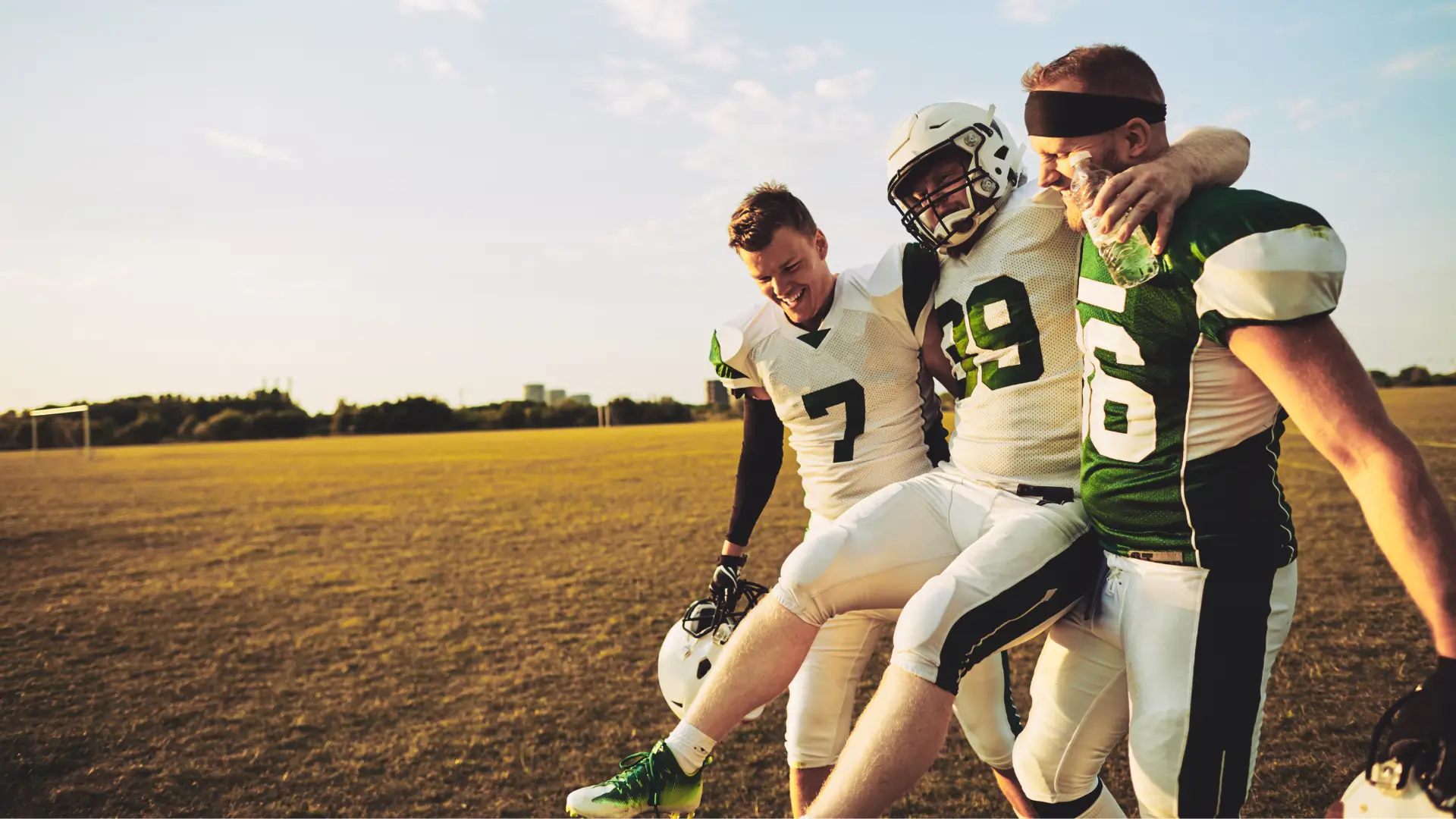Football, a high-intensity sport that demands physical strength, agility, and endurance, puts athletes at an increased risk of injuries. Among these injuries, one of the most severe and common is an anterior cruciate ligament (ACL) injury. The ACL is a critical ligament in the knee, helping to stabilize the joint during rapid movements, twists, and directional changes—all actions common in football. ACL injuries can be devastating, both physically and mentally, often requiring extensive rehabilitation and sometimes surgery.
Causes of ACL Injuries in Football
ACL injuries occur when there is a sudden change in direction, awkward landing from a jump, direct collision, or fatigue, all of which are routine in football. Here is a breakdown of these primary causes:
- Pivoting and Cutting Movements: Football players frequently pivot, turn sharply, and cut around opponents. These rapid changes in direction put tremendous strain on the knee, leading to ACL injuries when the knee twists unnaturally.
- Direct Contact or Collision: A forceful tackle or hit directly to the knee can cause the ACLhttps://drive.google.com/file/d/1XFG6uxVZrYVdPvWikmuLPZ_c9mRk0xrO/view?usp=sharing to tear. Football, being a contact sport, presents many opportunities for these kinds of injuries.
- Landing Improperly: When players jump to catch a pass or defend against an opponent, improper landing mechanics can place undue stress on the knee joint. If the knee is not aligned correctly upon landing, the ACL may tear.
- Overuse and Fatigue: Football players often push their bodies to the limit. Continuous play without proper rest and recovery can weaken the muscles that support the knee, making it easier for an ACL injury to occur.
Understanding the causes of ACL injuries is the first step in creating effective strategies for treatment and prevention.
Treatment for ACL Injuries
When it comes to treating ACL injuries, the severity of the tear dictates the course of action. At Parker Performance Institute in Frisco, Texas, we take a client-centered approach to care, combining medical neurology, chiropractic care, massage therapy, and nutrition to promote holistic healing. Here’s how our treatment for ACL injuries typically proceeds:
- Initial Evaluation: The first step in treating an ACL injury is a thorough evaluation by our experienced orthopedic professionals. Imaging techniques like MRI scans are often used to assess the severity of the tear.
- Conservative Treatment (Non-Surgical):
- For minor ACL tears or partial injuries, conservative management might be recommended. This includes physical therapy to strengthen the muscles around the knee and improve stability.
- Bracing may be used to support the knee while the ACL heals.
- Massage therapy, as offered at Parker Performance Institute, can also assist in relieving pain, reducing inflammation, and promoting tissue repair.
- Surgical Treatment:
- In more severe cases, where the ACL is completely torn, surgery may be necessary. ACL reconstruction surgery involves replacing the torn ligament with a tissue graft, usually taken from another part of the patient’s body or a donor.
- Post-surgical rehabilitation, including physical therapy and nutritional support, is critical for regaining strength and mobility in the knee, accelerating recovery, and helping athletes return to the field stronger than before.
- Neurological Rehabilitation: ACL injuries can affect not just the body, but the brain as well. Neurological rehabilitation helps retrain the brain and body to work together effectively during movements, reducing the risk of re-injury.
At Parker Performance Institute, we believe in a comprehensive approach that treats the whole person, not just the injury. By integrating various therapies, we help athletes recover faster and more fully.
Prevention of ACL Injuries
While ACL injuries are common in football, there are steps athletes can take to reduce their risk. Here are some strategies for preventing ACL injuries in football:
- Strength Training:
- Building strong quadriceps, hamstrings, and glute muscles can help stabilize the knee and reduce stress on the ACL. Exercises such as squats, lunges, and deadlifts are excellent for building these muscles.
- Proper Warm-Up and Stretching:
- Always warm up properly before a game or practice. Dynamic stretches and drills that mimic the movements you’ll perform during the game are essential for preparing your body.
- Focus on stretching the muscles around the knee, particularly the hamstrings and quadriceps, to improve flexibility and reduce the risk of injury.
- Neuromuscular Training:
- Neuromuscular training focuses on improving body mechanics during movement. This type of training teaches athletes how to jump, land, and pivot correctly, reducing the stress placed on the knee. Prevention programs that focus on strengthening the muscles around the knee, improving flexibility, and enhancing balance, like our one-of-a-kind athlete coordination enhancement program, can significantly lower the likelihood of injury.
- Bracing and Taping:
- Some players use knee braces or tape for additional support, particularly after recovering from a previous ACL injury. While these can offer some protection, they should not be relied upon as the sole preventive measure.
- Rest and Recovery:
- Giving your body time to rest and recover is crucial. Overtraining can lead to muscle fatigue, increasing the risk of ACL injuries. Proper sleep, hydration, and nutrition are also essential for maintaining knee health.
ACL injuries are a serious concern for football players, but with the right approach, they can be effectively treated and prevented. Whether you’re dealing with a current injury or looking to prevent future ones, it’s important to seek a holistic treatment plan that considers both the body and the mind.
At Parker Performance Institute in Frisco, Texas, we specialize in comprehensive care that integrates neurology, chiropractic care, massage therapy, and nutrition. Our goal is to help athletes recover from ACL injuries and return to the game stronger, while also providing preventive strategies to reduce the risk of additional injuries. If you’re looking for treatment for ACL injuries or want to learn more about prevention, don’t hesitate to reach out to us for personalized care. Together, we can help you stay in the game for years to come.




